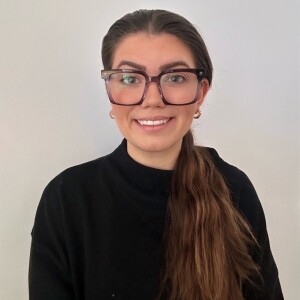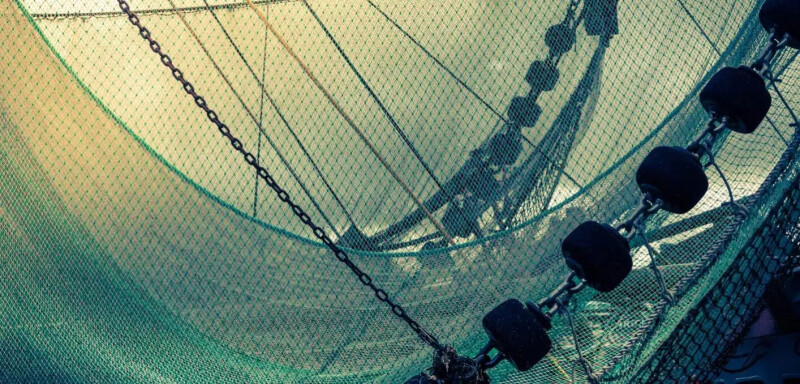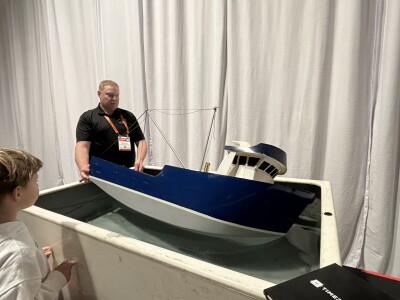Across the West Coast and Bering Sea, some of the biggest gains in fuel efficiency aren’t coming from high-dollar propulsion systems or experimental fuels, they’re coming from gear fishermen already know and use every day.
Lighter nets, streamlined trawl doors, and smarter rigging choices are helping trawl captains burn less fuel, spend less time towing, and reduce bycatch.
“Our trawl fishing fleet has steadily transitioned to more efficient gear, especially over the past decade,” said Spencer Whitlock, fleet manager of Alaska Boat Company. “These advancements, such as nets made from synthetic materials like Dyneema and Spectra and lighter trawl doors using technology utilized in the aerospace industry, allow for a wider net spread, covering more ocean with each tow.”
Dyneema fibers offer the same mesh breaking strength as conventional fishing netting and roping materials, but with one-half to one-third the weight of nylon.
Whitlock further explained that in fisheries like the Bering Sea pollock fishery, maximizing gear efficiency can have a major impact on both economics and emissions. “Most vessels return to port with their holds completely full. The use of lighter gear helps shorten the time it takes to fill the holds, reducing the time the trawl net is in the water,” he said. “This reduced net towing time leads to considerable fuel savings, since our vessels burn through roughly twice as much fuel when towing compared to when transiting.”
These practical improvements align with the findings of the Fishery Friendly Climate Action Campaign, which released a six-volume series called Policy Pathways to a Low Carbon Fishing Fleet. Among 148 commercial fishermen interviewed across the U.S., “efficient trawl gear” emerged as one of the most recommended solutions to prioritize in demonstration projects and future incentive programs.
As outlined in the report, these upgrades include “semi-pelagic doors, knotless twine, and low-resistance warp and net materials.” The findings weren’t focused on flashy new tech; it was field-tested improvements that reduce drag, weight, and fuel burn.
“There have been very simple changes that make a huge difference,” said Whitlock. “One relatively simple change was when our net manufacturer began removing steel hardware in their nets and replacing it with neutral buoyancy Spectra lashings, or spliced loops in place of shackles. It was amazing to see the amount of weight reduction in the net from that alone.”
While many fishermen have taken these steps independently, they often encounter barriers when taking the next leap. “We have also spent significant amounts of money on upgrades that had very little, if any, impact on fuel efficiency,” Whitlock shared, also mentioning the importance of learning from peer success stories and building trust in new solutions before committing capital.
A key takeaway from the national research was the need for “pilot and demonstration projects” that are hands-on, real-world, and grounded in diverse fisheries and boat types. “Somebody’s got to demonstrate the whole thing and see how it is for a smaller vessel versus a bigger vessel versus a speed vessel,” said one Massachusetts trawler. “Then you can see better. Because I want to know, which one would I pick for my vessel?... Every vessel is different.”
Whitlock couldn’t agree more: “I hate being the first to try the latest and greatest,” he admitted. “Typically, I like to hear some actual feedback from fishermen or managers within our fishery before investing in anything. That being said, I do recognize that we need to do our fair share in testing our new technologies.”
He added that collaboration between fishermen and program designers is essential to success. “Where I always see these programs go sideways is the lack of inclusion of the fishermen and managers when putting together an executable testing procedure onboard the vessel,” he said. “Most of the time, the plan is made by people with little to no experience on the water long before the eyes are put on the vessel. When this happens, the projects never make it away from the dock.”
Government-backed research helps further support that. Volume 6 of the Policy Pathways research calls for “collaboration and co-development.” Respondents in the study suggested three-way partnerships between manufacturers, marine technicians, and fishing captains to ensure the end product actually works in the wheelhouse and on deck, not just on paper.
And when it comes to driving adoption across the fleet? Trust and familiarity still carry the most weight. “We hear about new gear mostly from salespeople or other fishermen,” said Whitlock. “It’s also amazing how industrious fishermen are. If there becomes a need for a certain product, we will adapt it from another industry or just build it ourselves.”
From net design to trawl doors and tow time, these proven gear modifications are making a measurable impact on emissions, fuel use, and bottom lines. Often with little to no changes in operations or catch rates. That’s why this kind of gear is a standout candidate for expansion through pilot programs, risk-sharing initiatives, and future incentive funds.
“When we look at gallons of fuel saved year over year, it becomes very clear that investing in better gear is a simple path towards more profit,” Whitlock said. “If the new equipment can check two of my boxes, reducing bycatch and burning less fuel, then I’m willing to take steps to give it a try.”
Find more on Talking Shop on a Low Carbon Fleet here.







